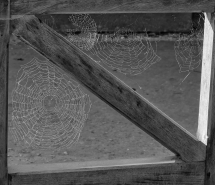Chateaux of the Loire – Being homeless, this was a great opportunity to do some house hunting in France, fortunately for us and our budget none were for sale. These castles originated in the 9th and 10th centuries, when territory in France was divided among individual lords and princes. These nobles built castles to control the area immediately surrounding them, and were both offensive and defensive structures; they provided a base from which raids could be launched as well as protection from enemies. The structures also served as centers of administration and symbols of power. Urban castles were used to control the local populace and important travel routes, and rural castles were often situated near features that were integral to life in the community, such as mills and fertile land. Lords and nobles moved from place to place for months at a time conducting business, so they left their wives and children in the most secure location. Additionally, it was common practice in these days to have a mistress or two, and each woman would expect to be kept in their own castle befitting the man’s status.
Under a king, the raiding and feuding ceased. In this new era, the fortress was either torn down, remodeled, or a new summer home/hunting camp built into what is today the architectural style known as the Chateaux. For example, King Francois 1 grew up in the Fortress of Amboise, and remodeled it to a spacious and homey chateaux. Its place on the River Loire was strategic, since Francois’ administrators could keep track of goods headed on barges to Paris up the Loire, and then to levy the appropriate “import” taxes.
In the mid 1600’s King Francois 1 shifted the center of power in France from the Loire back to the ancient capital of Paris. With him went the great architects, but the Loire Valley continued to be the place where most of the French royalty preferred to spend the bulk of their time. The ascension to the throne of King Louis XIV in the middle of the 17th century made Paris the permanent site for great royal châteaux when he built the Palace of Versailles. Nonetheless, those who gained the king’s favor and the wealthy bourgeoisie continued to renovate their existing châteaux or build lavish new ones as their summer residence in the Loire.
The châteaux’s of the Loire look like a vision straight out of a fairy tale, with their gables, dormer windows, chimneys, turrets and pinnacles. But their back stories involve money, jealousies, envy, corruption, foreclosures and all the things middle age soap opera.
Some chateaux’s are still occupied by the family, they may have one wing furnished in family antiques and occupy another. Other places were ransacked during the French Revolution; the furniture carted away and auctioned off, ultimately, those were given back to the community. The community must charge admission just to keep up with mounting maintenance costs. We observed a wedding at one chateaux chapel and I asked our guide how a bride/groom reserves these grounds and she answered: you must be a resident of this town, no one else can be married in this chapel.
All together we saw 5 chateaux : Chenonceaux, Amboise, Chaumont sur Loire, Chambord and Cheverny. It was a balanced mix of homey, luxurious, remodeled, structures built over successive occupants. . . .
I think my favorite was the red brick guest house of Amboise Castle. King Francois 1 enjoyed companionship with Leonardo DaVinci for the last 3 years of Leonardo’s life. The guest house provided for him has remained intact. Leonardo’s workshop, painting studio, the places Leonardo used as background settings for portraits. Today, the curators have built many of his inventions and have staged them on site: swinging bridges, that were pre-manufactured, and carried to “war” used temporarily and then removed to another crossing. DaVinci’s war implements like a tank or a machine gun. (In the mid-1700’s) It was amazing to see how far reaching his mind worked. Of course, this is where he finished the Mona Lisa (he presented it to King Francois 1) and the museum has a gallery wall where various abstractions of the Mona, perhaps the best known painting in the world, have been created.
Full size photos are available by clicking on the thumbnails.


